If the lack of a green thumb has been keeping you from gardening, this is the perfect option to get started with. With its striking flowers and resilient nature, a kalanchoe is your best bet to cultivate the garden of your dreams.
Kalanchoe is a genus of 125 species of plants andsucculentsthat are part of the stonecrop familyCrassulaceae. It is native to Madagascar and tropical Africa. Kalanchoe plants are known for their oval-shaped and often scallop-edged green leaves.
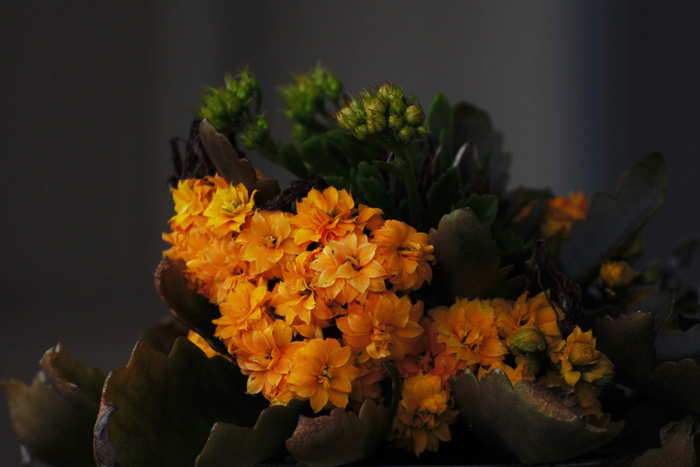
Image credits:Vijayalakshmi Nidugondi
Kalanchoe species are popularhouseplantsbecause they are durable, easy to grow, and can survive harsh conditions. This beautiful succulent can brighten your home with its flowers in various shades of red, magenta, pink, orange, yellow, and white. Here are some more details about the plant:
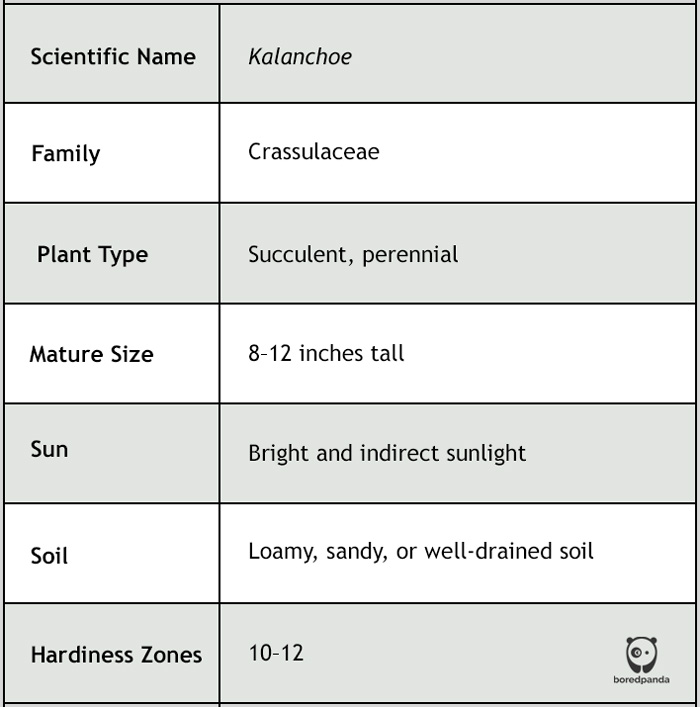
Kalanchoe Varieties
Kalanchoe succulents make excellent houseplants, and they can also thrive outdoors. Here are some incredibly diverse and gorgeous Kalanchoe types that can be planted in your home or outside.
Florist Kalanchoe(Kalanchoe blossfeldiana)
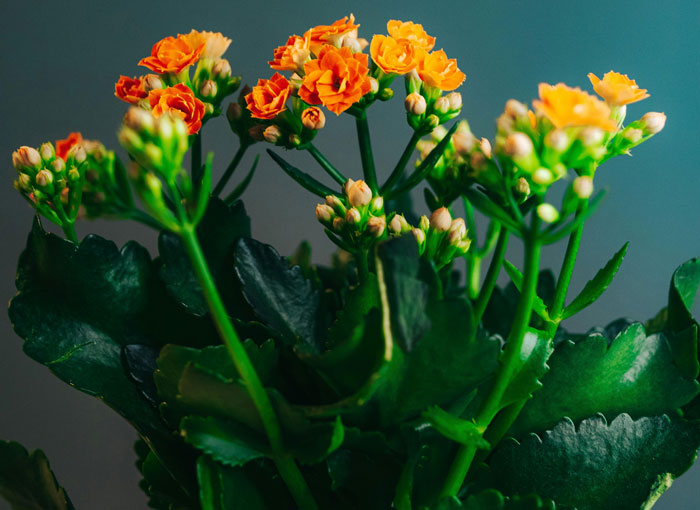
Image credits:seyfi durmaz
This cultivar has three petal formations: single, double, and rose. Single petals have a star-like shape, while double petals have an additional set of four or more inner petals. Lastly, rose-like flowers have many petals that make them look like fully opened roses in bloom.
Devil’s Backbone(Kalanchoe daigremontiana)
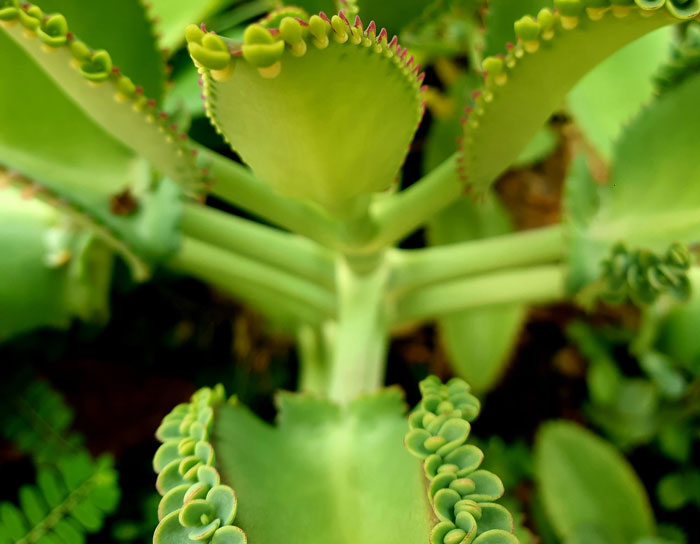
Image credits:Linda Luz
It is essential to know that many parts of this plant contain a toxic steroid,daigremontianin. Hence, the succulent can pose risks to humans and animals if ingested or if its sap comes in contact with the skin or eyes. Handling this plant with care is a must.
Cathedral Bells(Kalanchoe pinnata)
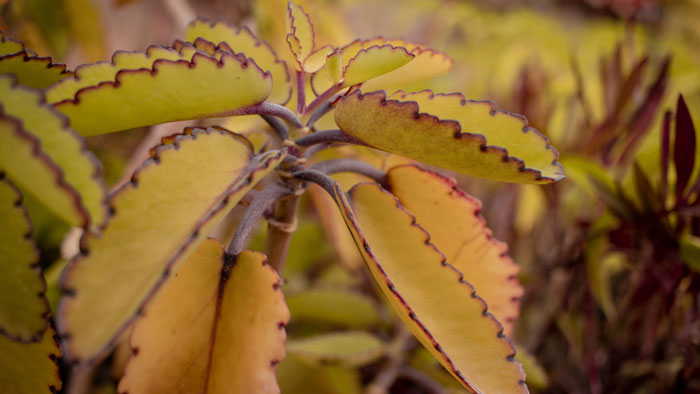
Image credits:at infinity
This beautiful houseplant is called the cathedral bells because it produces bell-shaped blooms. This succulent is native to Madagascar and has become naturalized in tropical and subtropical areas. It is one of the kalanchoe species that requires a lot of warmth and bright light to flower.
Paddle Plant(Kalanchoe thyrsiflora)
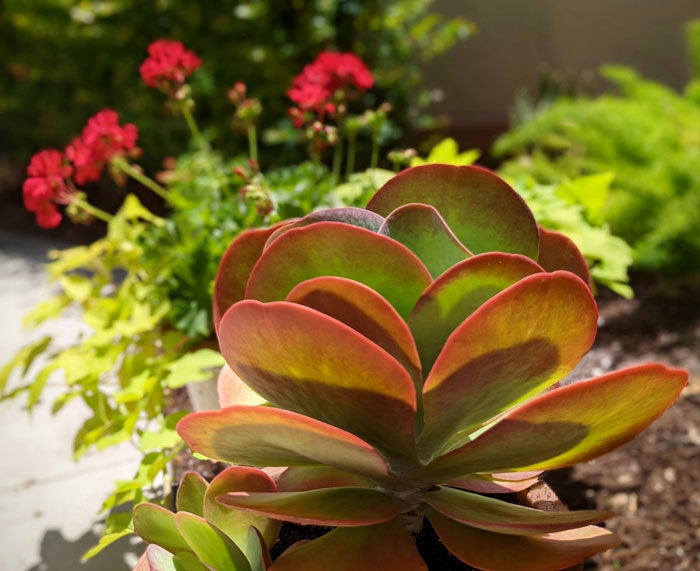
Image credits:Kathleen Culbertson
This one is known as the paddle plant because it grows rose-like, flat, and round leaves. What’s special about it is that the plant dies after flowering but continues to thrive through offsets that grow around the base of the plant. This growth pattern creates a continuous cycle of renewal.
Panda Plant(Kalanchoe tomentosa)
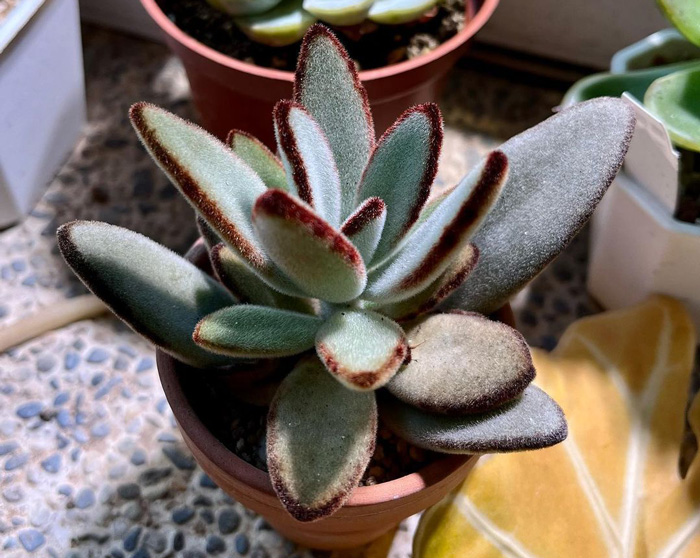
Image credits:pagechu
Kalanchoe tomentosais also called the panda plant because it produces thick, fuzzy leaves with a blue tinge and brown spots around their edges. It is adapted to conserve water and has a thick stem with many branches. When you prune the plant, it looks like a picturesque shrub or bush, adding a touch of lush elegance to any space.
Lavender Scallops(Kalanchoe fedtschenkoi)
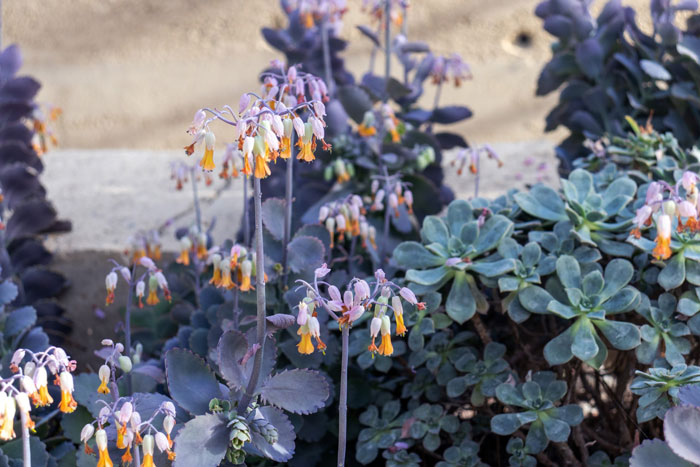
Image credits:Lucie Douezi
This kalanchoe type makes a great garden plant and can grow quite tall. It takes several years for this succulent to bloom. But once it does, you will enjoy seeing its beautiful shades of red during spring. At times, when the flowers are exposed to sunlight, you may observe a delightful creamy lavender hue gracing their petals.
All You Need to Know About Kalanchoe Care
Kalanchoe plant care is easier than you can imagine. However, you must consider a few things to ensure these flowering plants get the best care.
Sunlight
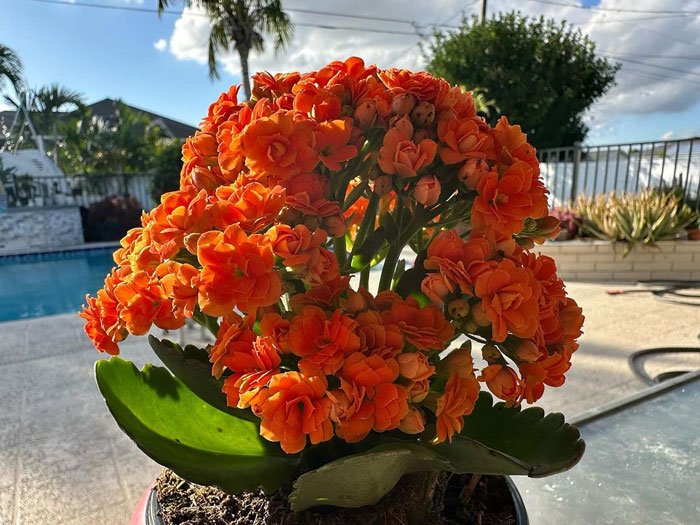
Image credits:ron_holwadel
Water
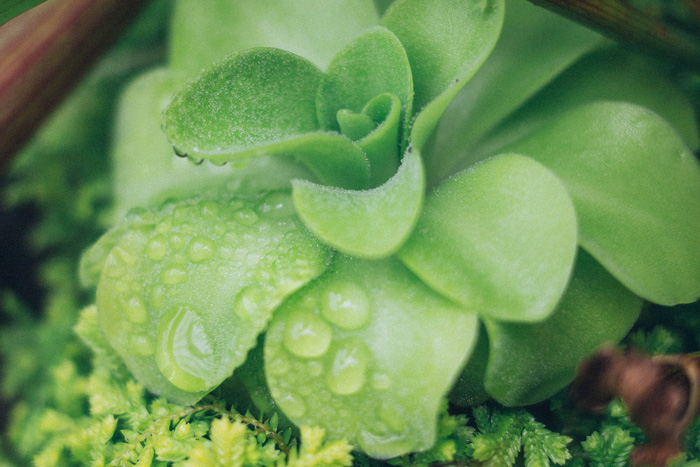
Image credits:Elina Sazonova
Caring for kalanchoe is easy because succulents don’t need water as frequently. So, if you habitually forget to water your plants, this is your best option! Overwatering can damage the kalanchoe, so allow it to dry out entirely before pouring more water.
Soil
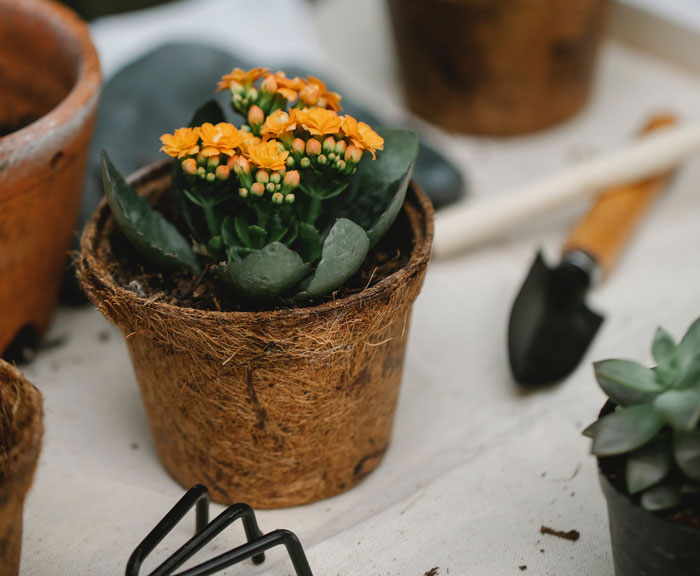
Image credits:Gary Barnes
The kalanchoe grows best in loose, loamy, sandy, well-draining potting soil like cactus mix. Kalanchoe care indoors is about creating a soil mix that doesn’t retain too much moisture. Get aplant potwith many drainage holes so that it doesn’t hold excess water.
Temperature and Humidity

Image credits:akaleilou
This popular houseplant isn’t as fussy about temperature as otherindoor plants. It thrives in a fairly wide range of temperatures of 59–95°F (15–35 °C). Although kalanchoes can thrive in cooler temperatures, they do best in warm climates. Nevertheless, kalanchoes can die from frost, so they should be overwintered indoors.
Fertilizer
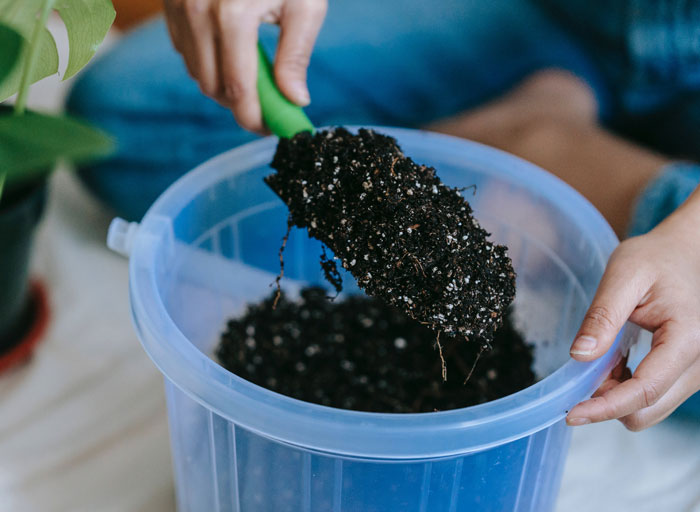
Image credits:Teona Swift
You should fertilize kalanchoes once a month, especially during spring and summer. Switch to a fertilizer higher in phosphorous if you don’t see as many kalanchoe flowers. Always follow the instructions on the product’s label. However, aliquid fertilizeris generally a better option because it will get absorbed quickly and isharder to overdose.
Winter Care
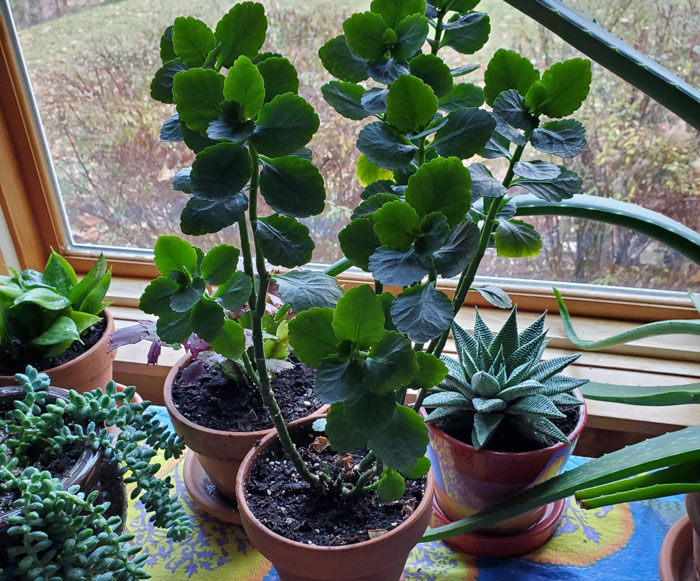
Image credits:Squirrel_Toboggan
Bring your kalanchoe inside during the winter. If the temperature falls below 33°F (1°C), its leaves will begin wilting, and the plant might get frost damage. The succulent also needs less water in the winter than in summer or spring. Allow the soil to dry out thoroughly before you water it.
How to Grow a Kalanchoe Plant
These plants tend to be slow-growing. They can take an average of 2–5 years to reach their mature size. Here’s how you can plant and grow the succulent.
Grow Kalanchoe From Seeds
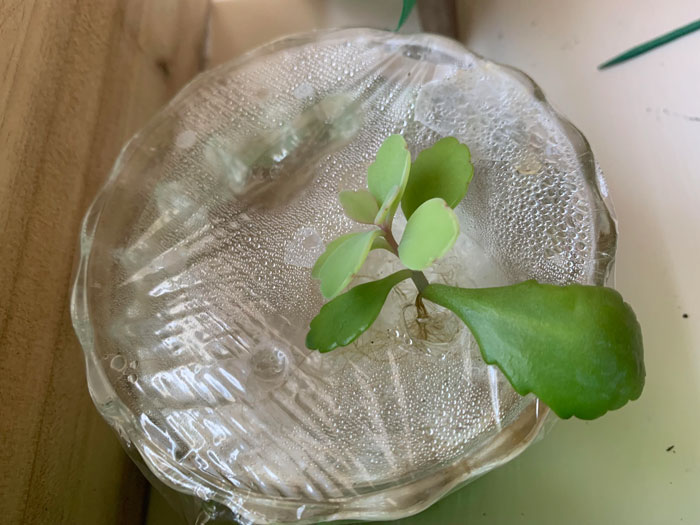
Image credits:Bacon8er8
Kalanchoe Propagation
Another way to grow kalanchoe is through stem cuttings. As we mentioned earlier, you can also propagate kalanchoe from leaf offsets or plantlets. Offsets absorb a lot of energy from the parent plant, so propagation benefits the kalachoe’s health.
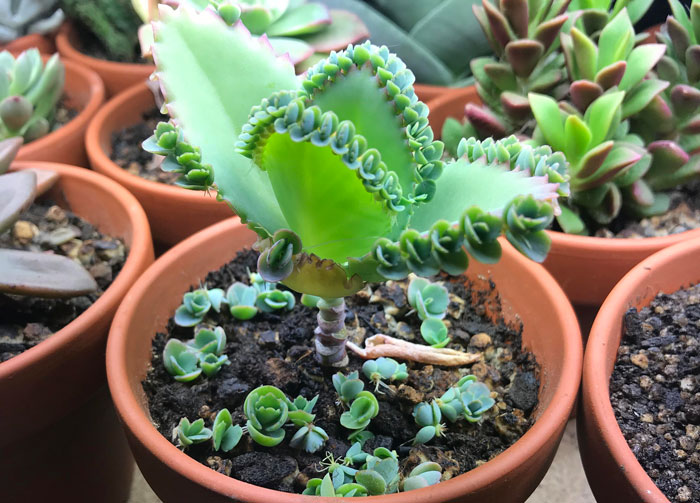
Image credits:JelliedBiscuit
How to Repot a Kalanchoe

How to Prune
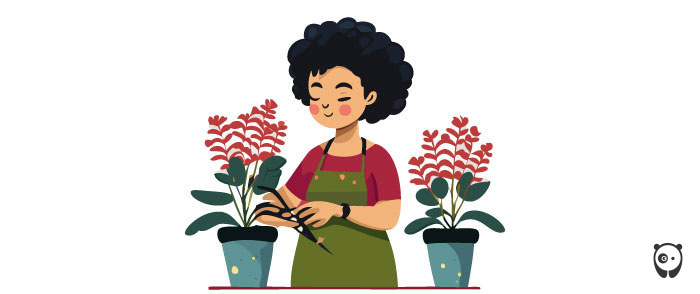
Pinch off dead or dying blooms and stalks. Use shears to trim the flower stalks, encouraging the plant to branch out and improve its foliage. Kalanchoe is quite forgiving, so don’t stress too much about pruning.
It’s all about keeping your plant healthy and looking its best. Just adjust how often and how much you prune based on the type of kalanchoe you have and how you want it to grow.
How to Get a Kalanchoe to Bloom or Rebloom
Kalanchoes produce colorful blooms almost year-round if you control their exposure to light. However, these plants need a hibernation or rest period to gain enough energy to bloom.
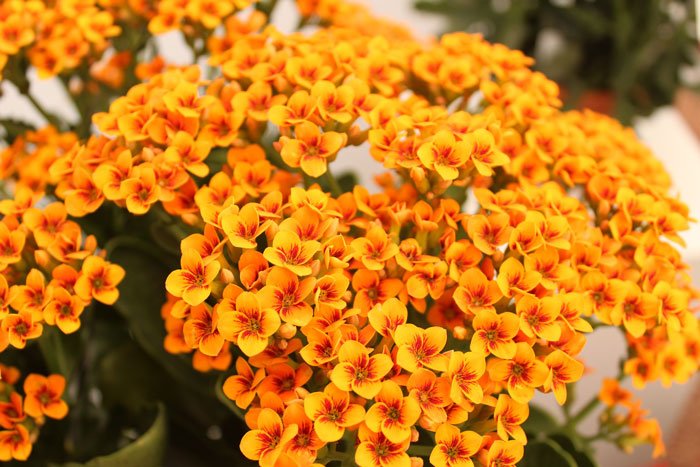
Image credits:Rebecca Niver
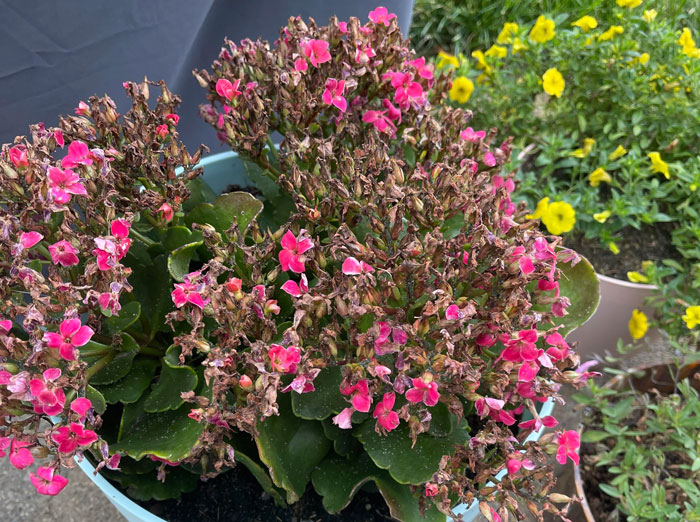
Image credits:courtneyrachh
Deadheading is the process of removing flowers from the plant once they have dried. This helps the succulent to keep flowering and keeps the kalanchoe looking tidy. You can also pluck off dry and brown leaves or branches.
Pests, Problems, and Diseases
Although kalanchoes are low-maintenance plants, they are still susceptible to some common problems.
Pests
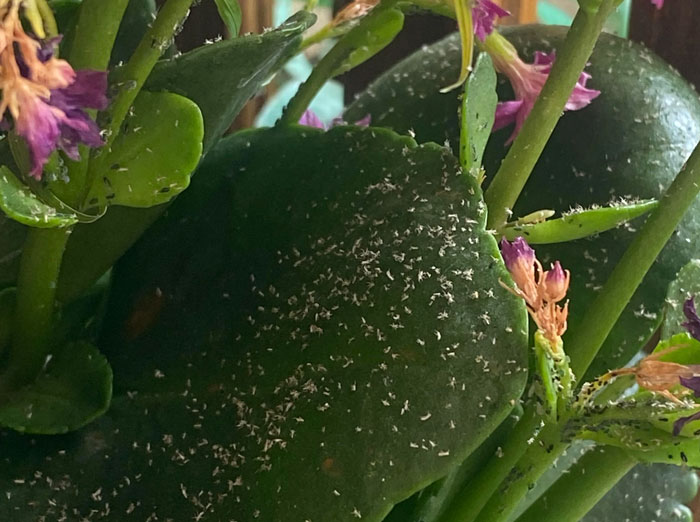
Image credits:RoseSkye
Mildew
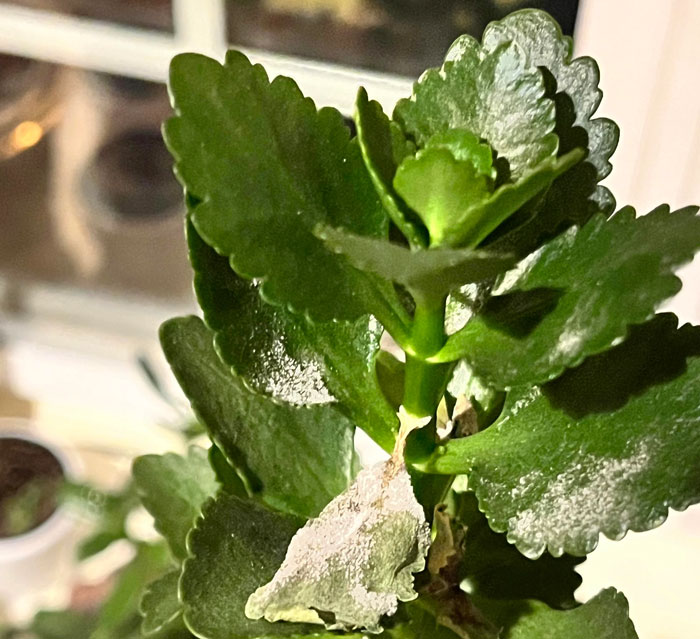
Image credits:katabatic-syzygy
Soft Stems
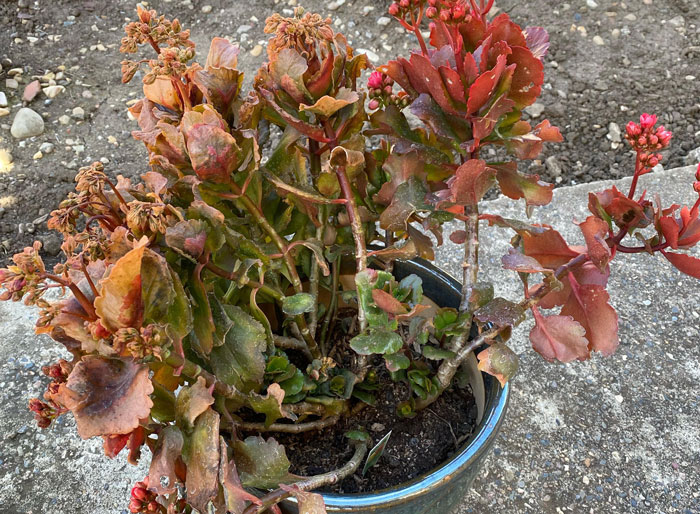
Image credits:outersenshi
If you overwater the kalanchoe, you will notice that its stem will start wilting, and its roots will begin to rot. If you see this happening, stop watering the plant till it recovers. Ensure the plant is kept in a pot with many drainage holes.
Where’s Your Plant-Astic Kalanchoe?
We can’t wait to see your kalanchoe’s pictures and to know which variety you liked best. With all this talk of succulents, here are some unusual ones, likerose-shaped succulentsanddolphin succulents, that just might tickle your fancy!
Frequently Asked Questions (FAQ) About Kalanchoes
How Long Do Kalanchoe Plants Live?
Kalanchoes are hardy succulents, and they can thrive for up to seven years or even longer if you look after them well. Keep pruning the plant, repotting it when it gets too big, and removing or replanting offshoots.
What to Do With Kalanchoe After Flowering?
You can do a couple of things with the kalanchoe once it is done flowering. You could pick the showy blooms and createflower herbariums. Or, if you love it when the succulent flowers, you can trick it into reblooming after six weeks. The last thing you can do to improve the plant’s health is to pick off dead or wilting leaves and flowers as soon as you see them.
Can Kalanchoe Be Used to Treat Cancer?
It is interesting to note thatKalanchoe pinnatahas thepotential to fight cancer. Studies have shown that its phytochemicals can enhance therapeutic efficacy when combined with chemotherapeutic drugs.You May LikeAster Growth & Care: Everything You Should Know For A Starry LandscapeAivaras KaziukonisBegonia Growth and Care: A Complete Guide For Full BloomsRutuja DumbreDracaena A to Z: How To Care For This Easy-To-Grow HouseplantŽydrūnė Trukanavičiūtė
Aivaras Kaziukonis
Rutuja Dumbre
Žydrūnė Trukanavičiūtė
Home & Design